The cows are not eating what you eat. They are not eating your food. Animals are good for the environment; eating and being eaten is an essential part in our entire ecosystem. This includes bacteria, fungi, bugs, birds, elk, bison, deer, tigers, elephants, and yes, even cattle.
The ‘meat is bad, fiber is good’ rhetoric is absolute nonsense. Meat is nutrient dense, easy to transport and store, grows where other food can’t, and absolutely IS good for the environment. Raising meat completes the ecological cycle, just as wild animals do.
It’s easier and more economical to eat local and sustainably-raised animal products than local and sustainably-raised plant food. If you have to import animal products, calorie-for-calorie and nutrient-for-nutrient you will use less resources and fossil fuel consuming steak than you will consuming a plant-based diet.
Think your salad is better for the earth than your neighbor’s steak? Unless you are harvesting all your plants from your own back yard, it’s time to think again.
Meat is incredibly nutrient dense
Meat contains iron, B vitamins, zinc, vitamin D, vitamin A that is in usable form, protein, and, yes, fat along with all those fat-soluble vitamins so many are deficient in. What does not contain abundant and/or absorbable amounts of these essentials? Grains, vegetables, beans, and fruit.
Read: Saturated Fat is No Longer Discouraged: Journal of American College of Cardiology
The only thing low in meat that is a requirement for humans is vitamin C. Even with that, many people find that while they are in ketosis, as you would be on a low-carb meat-heavy diet, their need for vitamin C is very low.
Read: Carnivore Diet Vitamin C Deficiency Signs and Solutions
The problem with our food is not the meat
It’s the bun, not to burger.
The toast, not the butter.
The pasta, not the meatballs.
The bread, not the sliced turkey.
Yes, the standard American diet is nutrient-void, inflammatory, and contributing to chronic disease. But we’re blaming the 2 slices of lunchmeat in a sandwich for being the problem, where the problem really is the wheat, the canola-oil mayo, the trans fats, and the fake cheese.
That burger patty, fried egg, and chicken that’s hiding in all the breading is the best nutrition most people get in the day!
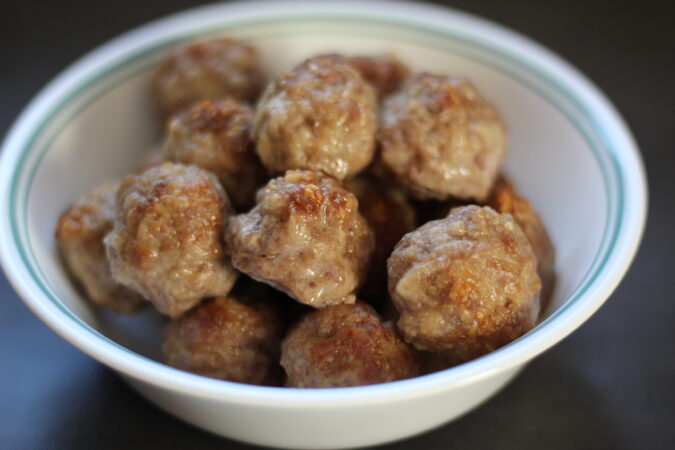
Pork Meatballs from local pork- YUM! Recipe Here
You don’t need to eat a ton of meat to get full or get your nutrients
Meat doesn’t require food combining or balancing to get everything you need. Think of meat as a self-replicating multivitamin that is easily absorbable and delicious.
I didn’t realize this until I tried the Carnivore diet, but you feel SO good when the most of your diet is animal products, because you’re easily getting all those nutrients that you know you need, and probably some that science hasn’t discovered yet.
Watch: My first week on the Carnivore Diet
Not only does this impact the amount of food you need to consume, but by eating meat we are:
- Reducing the amount of emissions needed to transport food
- Reducing packaging material for items that offer low/no nutritional value
- Reducing waste in transporting bulky plant foods
- Reducing energy needed to process plants (making any of the bazillion packaged foods on the shelves of most grocery stores)
You don’t eliminate much of it at all
Meat is easily absorbed, and your body knows just what to do with it. Because of this, your digestive system gets its job done quickly and efficiently, and then has time to rest and repair between meals. Despite tasting bland and being easy to chew, bread, crackers, and cereals are actually difficult for your body to digest.
Many people think that the lack of ‘bulk’ or ‘regularity’ associated with a high-meat diet is bad. But it’s not at all. It’s bad to hold onto waste product within your digestive system, but absolutely not necessary at all to have large frequent masses of indigestible food passing though you.
Fiber isn’t that great. It’s touted as beneficial, but we don’t absorb it, and it turns out that people with digestive issues generally benefit from reducing their fiber intake (source: Pubmed)
Patients were then instructed to completely stop their intake of dietary fiber, including vegetables, cereals, fruit, whole-meal bread, and brown rice for 2 wk. After 2 wk, patients were asked to reduce dietary fiber intake to an amount that they found acceptable for the long term. Patients were followed up at 1-mo intervals and final results were analyzed after 6 mo. The study showed that constipation and its associated symptoms can be effectively reduced by stopping or even lowering the intake of dietary fiber. (Source: Pubmed)
Fat is good for you
Oh but what about the fat? Isn’t meat high in fat? Meat that is raised sustainably is lower in fat than factory-farmed meat, but yes it still has fat in it. Fat is good for you. Our brain is made from fat, our nerves are made from fat, and our body happily and efficiently uses fat for energy.
Fat is considered to no longer be a risk-factor in cardiac disease, including saturated fat.
Read: Saturated Fat is No Longer Discouraged: Journal of American College of Cardiology
Fat is more calorie-dense, but it also sends satiety signals to your brains, supports healthy hormones, and doesn’t spike blood glucose. It’s much easier to overeat carbohydrate calories than fat/protein calories.
Which would you feel more full from? An 8-ounce ribeye steak (approx 550 calories) or a peanut butter and jelly sandwich with an apple (also approx 550 calories). If we’re going for food that fills you up and give you long lasting energy as well as all those good vitamins and minerals that you need, choose that steak!
You can live off one animal for a long time
If we’re going for the minimal amount of killing, counterintuitively meat wins this argument as well! One cow or steer can feed a human for a whole year or longer! Other than a minimal amount of vitamin C that may or may not be needed, and some salt, that’s all that would be needed. Compare that to the animals displaced, killed, and maimed in commercial farming.
Even in plant production, field mice are crushed by tractors. Birds’ nests fall victim to combines. Agricultural runoff poisons fish. And pesticides destroy insects in untold numbers. (source)
it’s always possible that a diet that contains animal products is complicit in fewer deaths than a diet that avoids them. (source)
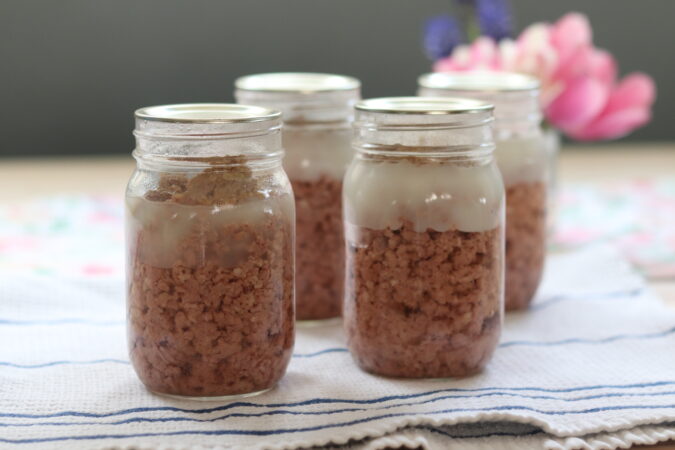
Meat is easy to store
Freeze it cooked or raw, dry it, can it, or eat it fresh! Meat is versatile and easy to store.
Read: Easy Meat and Soup Canning
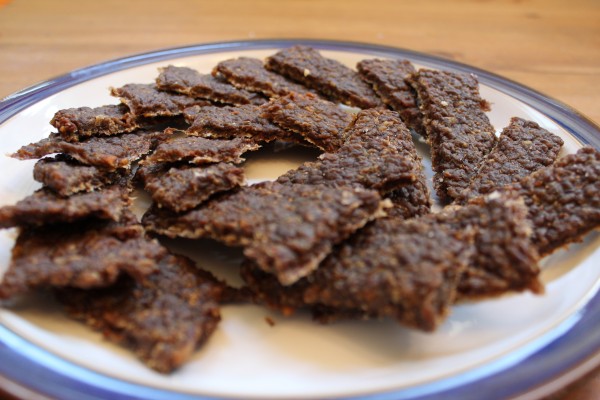
Meat is efficient to transport
So much of our food supply is lost in transport between farm and table. When we choose more nutrient-dense minimally-processed foods, there will be less food waste because there are less steps to the process. Buying one whole beef cow and picking it up directly from the butcher will yield far less waste in the process of getting food from the field to the table.
Read: Americans Waste an Average of 25% of the Food they Buy (total: $225/month or $2700/year!)
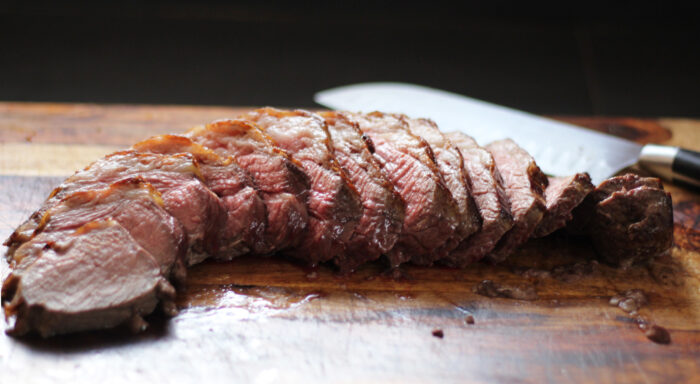
Cows and other ruminants eat stuff that humans can’t
They aren’t eating your food- they are eating grass. And that grass (and animals aka meat) grow where we can’t grow other food that is digestable by humans.
These cows are not taking your food, and they don’t need to take up the space that your other food grows.
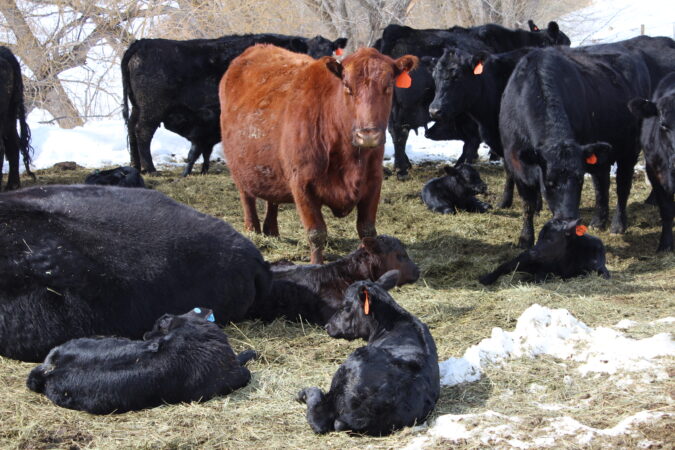
beef cows are protected and cared for as they give birth during winter in Montana.
Plants take from the soil, Animals give back
Not only do animals grow where other plant foods for humans don’t, they also improve the soil. Animals turn grass into meat (for us) and fertilizer (for the soil).
Next time you think you’re helping the earth by participating in Meatless Mondays, or giving choosing cereal over eggs, remember that if you need to choose between a monocrop and an animal, the animal is going to be the better choice nutritionally and environmentally.
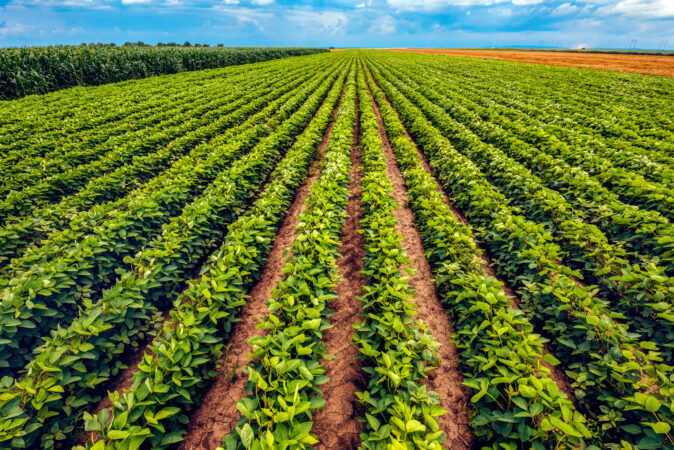
Cook Meat:
Not sure what to do with your meat? Here are some delicious simple recipes to get you started:
- Hearty Hamburger Mushroom Bake
- Bacon Cheeseburger Casserole
- Low Carb Taco Soup (Keto, GAPS)
- Chicken Liver Pate
- Sous Vide Cooking for Perfect Steak and Roast Every Time
- Pork Rind Nachos: Carnivore Diet Recipe
- Low-Carb Sausage Balls
Buy Meat:
Vote with your dollars for sustainable meat, and your body will thank you. I buy local beef and pork, but I also LOVE the deals I get from ButcherBox, and the variety and specialty cuts that I can find at US Wellness Meats.
To see how to support sustainable sustainable meat and still stay within your budget here: How to Get the Most Meat in Your Butcher Box Subscription

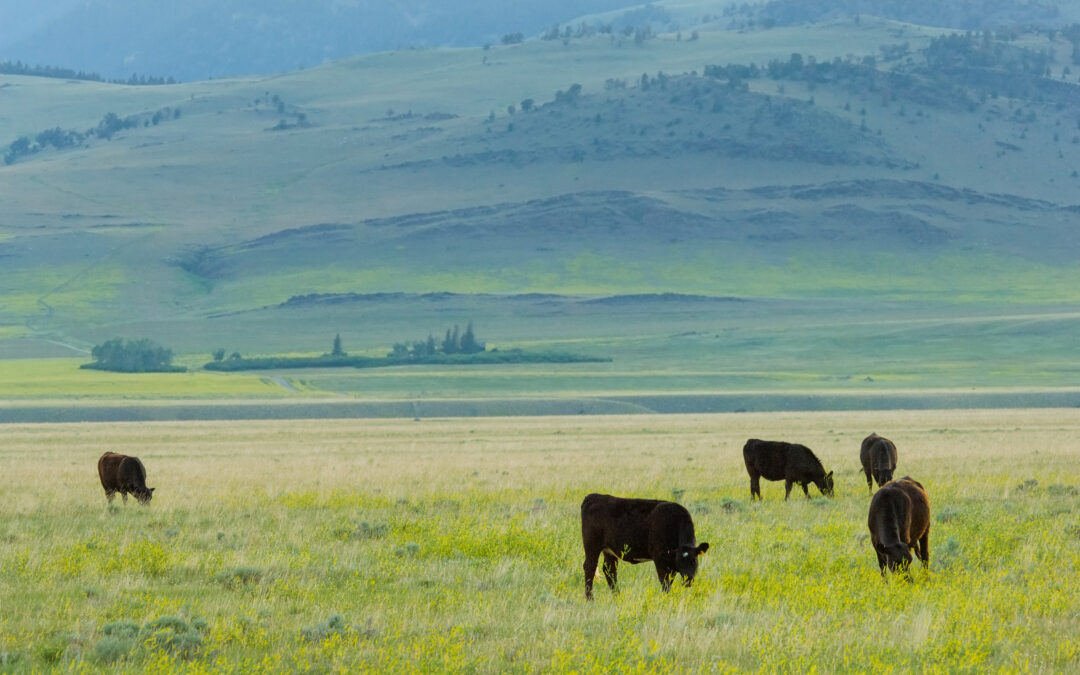
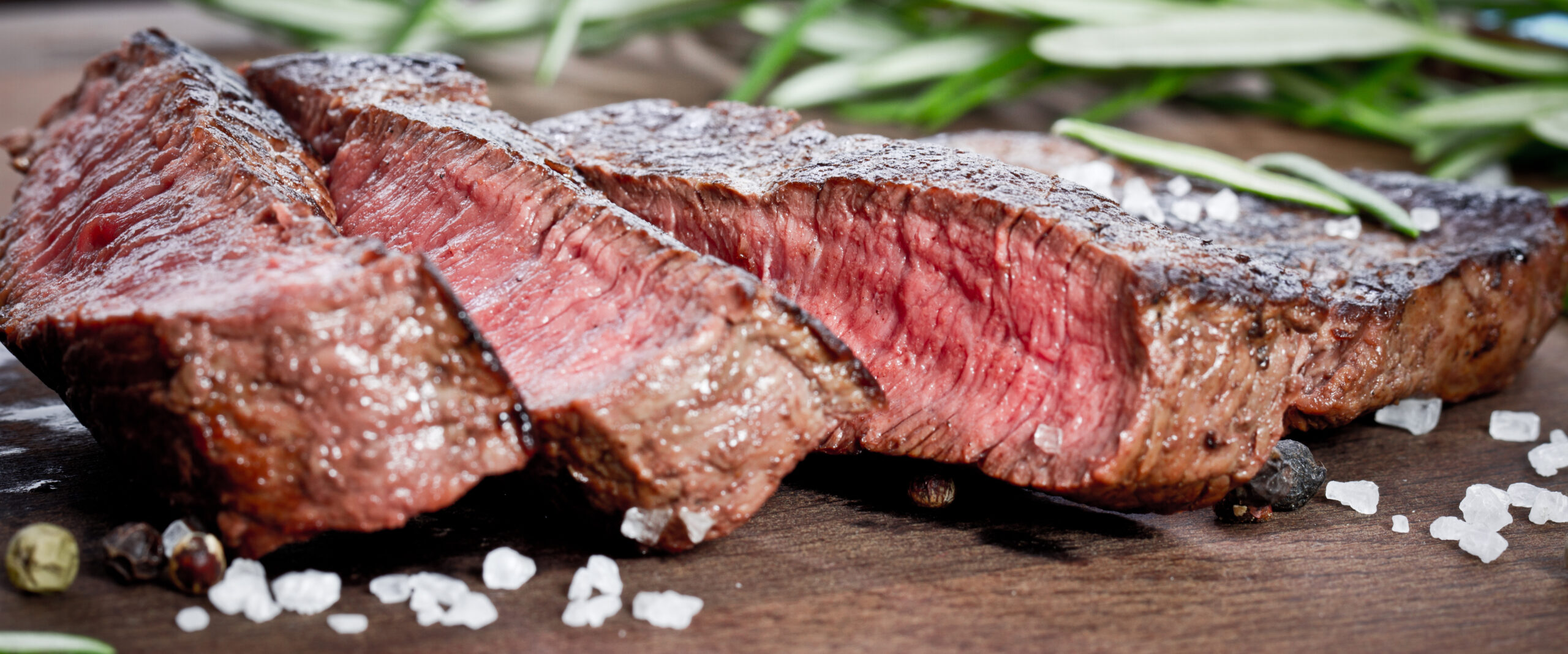

All of what you say might be true except you don’t take into account the methane produced by ruminant animals nor do you recognize that we simply can’t raise enough ‘meat’ animals to feed the world – it just takes too much space.
While it might work for North America – what about the rest of the world?
I think there is a lot of space where meat can be raised since it can be raised where crops can’t be grown. Do you believe that cows produce more methane than wild animals like elk?
There’s plenty of space. I live in Wales and there is more than enough space available. I live in an area where I see hills rolling with countryside but with very little animals. This is just misinformation. People like Alan Savory have proven that cattle can save this planet, and what we need to do is not decrease them but increase the amount. Please look at the pages of the Savory Institute on the net and the work they have done and what has been achieved, it is truly remarkable. It was an eye opener for me and now I think totally different.
Yes Cara!!! This!!! I agree with you 100%, both from anecdotal evidence from my life and all the research I’ve done over the years. This is the real truth about food, not the garbage narrative they’re trying to push in the mainstream. Thank you for speaking out about this. Keep up the good work!
Thanks so much! Everything is so backwards in food/health 🤨
Just remember, that when cows are fed the diet that they were designed to eat (aka GRASS and the like, not corn or other grains) they are actually a low-methane animal, just like other animals in the wild. The high amounts of methane from cows is produced from CAFO farms, these large commercial institutions where the cows are penned 24/7, not allowed to free range, and fed all types of (GMO) corn & other grains instead of the natural diet of hay, forage, alfalfa that they were designed to have! The grains are unnatural to their digestive system, hence the higher methane levels.
I love meat too! But I will add that if we exchange white flour products for whole grain, including the bran and germ, products then the nutritional value of grain products is much higher. A lovely balanced diet is best all around. God designed us that way.